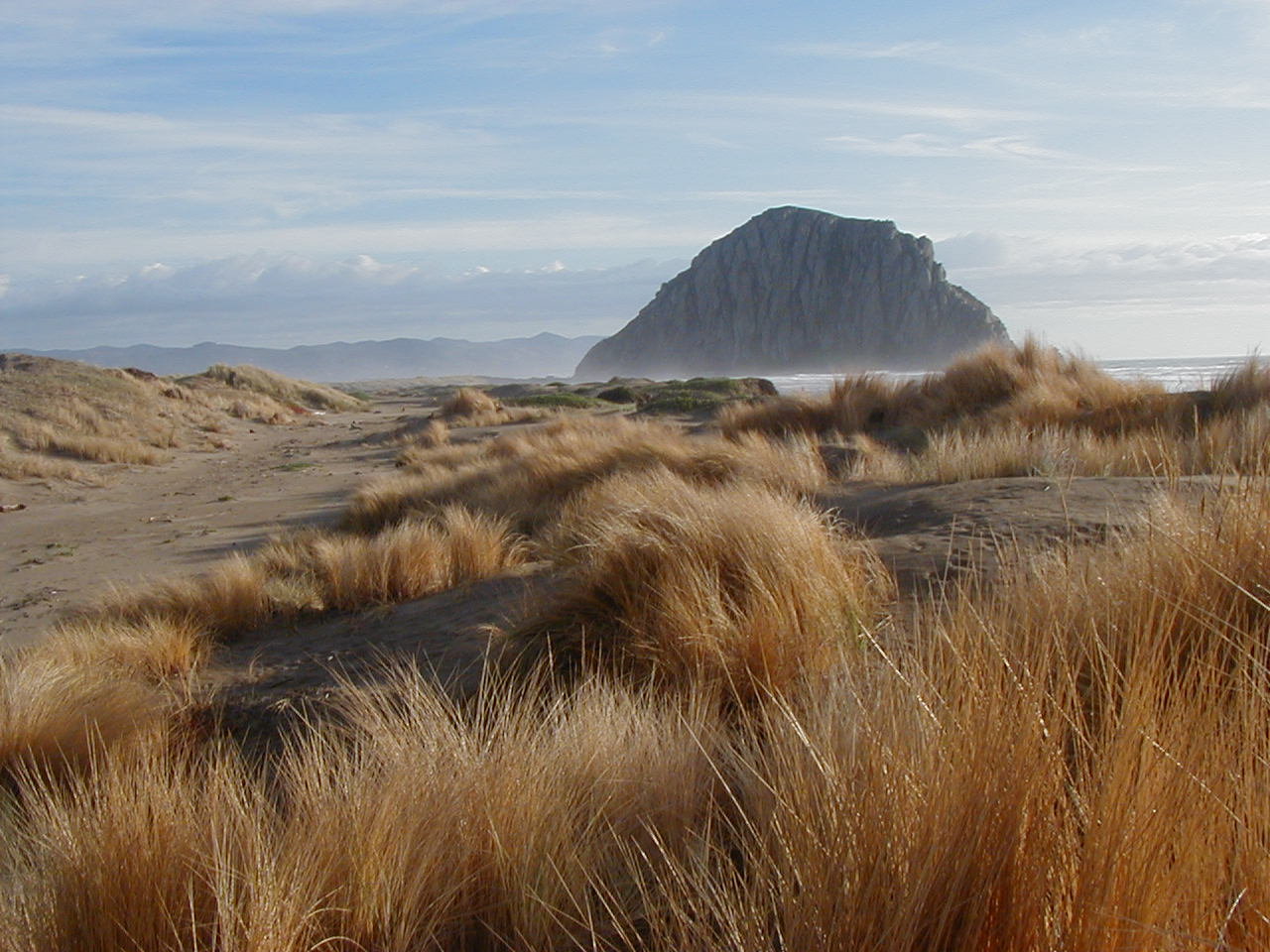
European Beachgrass (Ammophila arenaria) was introduced to the Western United States for the purpose of stabilizing dunes, and since then it has spread over much of the Pacific coast, driving out native species and altering dune morphology.
As with most highly invasives plant species, Ammophila is not tempered by the environmental factors that kept it in check in its native range. The lack of native predators and its highly competive growth habit allows this species to take over large swaths of dune habitat, choking out native plants and significantly reducing biodiversity. Active sand deposition stimulates tillering in Ammophila causing rapid sand aggregation that "oversteepen" the dunes, altering dune topography. In addition, Ammophila invades the nesting habitat of the endangered Western snowy plover, a migratory shorebird. It's growth habit prevents plovers from nesting in those areas.
In the San Luis Obispo Coast District, extant beachgrass infestations occur at Morro Strand State Beach, the sandspit at Montana de Oro State Park, and at Pismo State Beach.
In 2000, District staff began an intensive effort to remove European Beachgrass at Morro Strand SB by chemical and mechanical means. The main effort occurred in relatively new infestations within the pioneer foredunes (dune hummocks). The treatment site was selected because of its proximity to plover nesting habitat and its physical isolation from larger foredune populations.
Herbicide treatment with glyphosate started in the winter and spring of 2000/2001. Initial treatment achieved a 60 percent mortality after several months. In August of 2001 a California Conservation Corps crew handpulled the surviving beachgrass. It is anticipated that two to three retreatments (mechanical and/or chemical) will be required to achieve 100 percent mortality.
NOTE: Approximately four acres of beachgrass were burned in an arson fire near the project site in spring, 2001. The fire removed nearly all the aboveground biomass. Although the grass vigorously resprouted, District staff began an experimental herbicide treatment of the area. A combination of burning and herbicide treatment may prove effective in the removal of large patches of beachgrass. Coincidentally, this burn also led to the discovery of a previously unknown population of the endangered Morro Shoulderband snail. Until this discovery, the snail was commonly thought only to survive in populations south of Morro Bay.

A map of the Ammophila infestation at Morro Strand State Beach. The Ammophila patches are in dark blue.

Ammophila at Morro Strand State Beach Prior to Chemical Treatment
 |
 |
||||||||||||||||||||||||||||||||||||||||||||||||||||||||||||||||||||||||||||||||||||||||||||||||||||||||||||||||||||||||||||||||||||||||||||||||||||||||||||||||||||||||||||||||||||||||||||||||||
| Some Ammophila at Morro Strand State Beach after Chemical Treatment | |||||||||||||||||||||||||||||||||||||||||||||||||||||||||||||||||||||||||||||||||||||||||||||||||||||||||||||||||||||||||||||||||||||||||||||||||||||||||||||||||||||||||||||||||||||||||||||||||||
| (Different views than above) | |||||||||||||||||||||||||||||||||||||||||||||||||||||||||||||||||||||||||||||||||||||||||||||||||||||||||||||||||||||||||||||||||||||||||||||||||||||||||||||||||||||||||||||||||||||||||||||||||||
Click here for Ammophila Bibliography
<a href="../../default.asp
